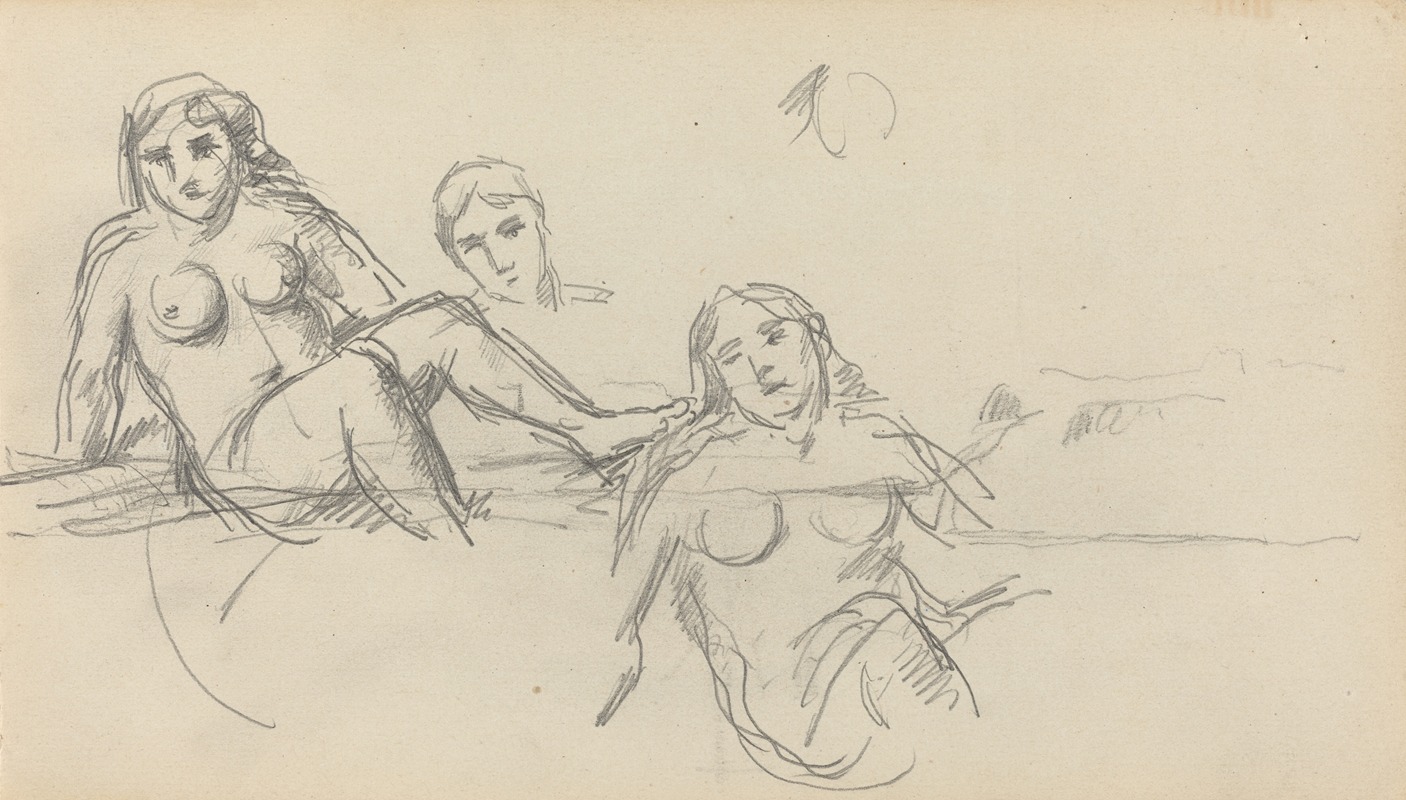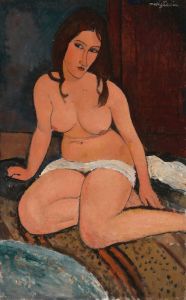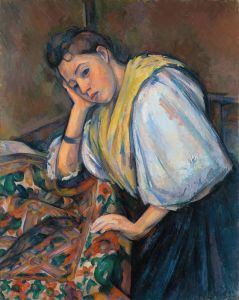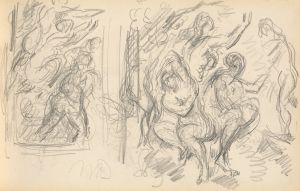
Seated Bather
A hand-painted replica of Paul Cézanne’s masterpiece Seated Bather, meticulously crafted by professional artists to capture the true essence of the original. Each piece is created with museum-quality canvas and rare mineral pigments, carefully painted by experienced artists with delicate brushstrokes and rich, layered colors to perfectly recreate the texture of the original artwork. Unlike machine-printed reproductions, this hand-painted version brings the painting to life, infused with the artist’s emotions and skill in every stroke. Whether for personal collection or home decoration, it instantly elevates the artistic atmosphere of any space.
Paul Cézanne's "Seated Bather" is a notable work within the artist's extensive exploration of the human form and his broader contributions to Post-Impressionism. Painted in the late 19th century, this artwork reflects Cézanne's distinctive approach to capturing the essence of his subjects through a unique blend of color, form, and composition.
Cézanne, born in 1839 in Aix-en-Provence, France, was a pivotal figure in the transition from 19th-century Impressionism to 20th-century Cubism. His work laid the foundation for the modernist movements that followed, influencing artists such as Pablo Picasso and Henri Matisse. "Seated Bather" is part of Cézanne's series of bather paintings, a theme he revisited throughout his career. These works are characterized by their focus on the human body, often depicted in natural settings, and demonstrate Cézanne's interest in the interplay between form and space.
In "Seated Bather," Cézanne employs his characteristic brushwork and a palette that emphasizes earthy tones, capturing the figure with a sense of solidity and volume. The painting is not a realistic portrayal but rather an exploration of the structural elements of the human form. Cézanne's approach to the bather is analytical, breaking down the figure into geometric shapes and planes, which was a precursor to the Cubist movement.
The composition of "Seated Bather" is carefully constructed, with the figure placed in a way that draws the viewer's eye across the canvas. Cézanne's use of color is deliberate, with subtle gradations and contrasts that enhance the three-dimensionality of the figure. The background, often a landscape or an abstracted environment, serves to complement and highlight the central figure, creating a harmonious balance within the painting.
Cézanne's bather series, including "Seated Bather," reflects his lifelong fascination with the challenge of representing the human form in a way that transcends mere imitation. He sought to capture the underlying structure and essence of his subjects, which he believed could be achieved through a careful study of form and color. This approach marked a departure from the Impressionists' focus on capturing fleeting moments and atmospheric effects.
"Seated Bather" is housed in various collections, with different versions and studies of bathers found in museums around the world. These works are celebrated for their innovative approach and their role in the evolution of modern art. Cézanne's influence on subsequent generations of artists cannot be overstated, as his work paved the way for new ways of seeing and representing the world.
In summary, Paul Cézanne's "Seated Bather" exemplifies the artist's groundbreaking approach to painting and his significant impact on the development of modern art. Through his exploration of form, color, and composition, Cézanne challenged traditional artistic conventions and opened new avenues for artistic expression.


















